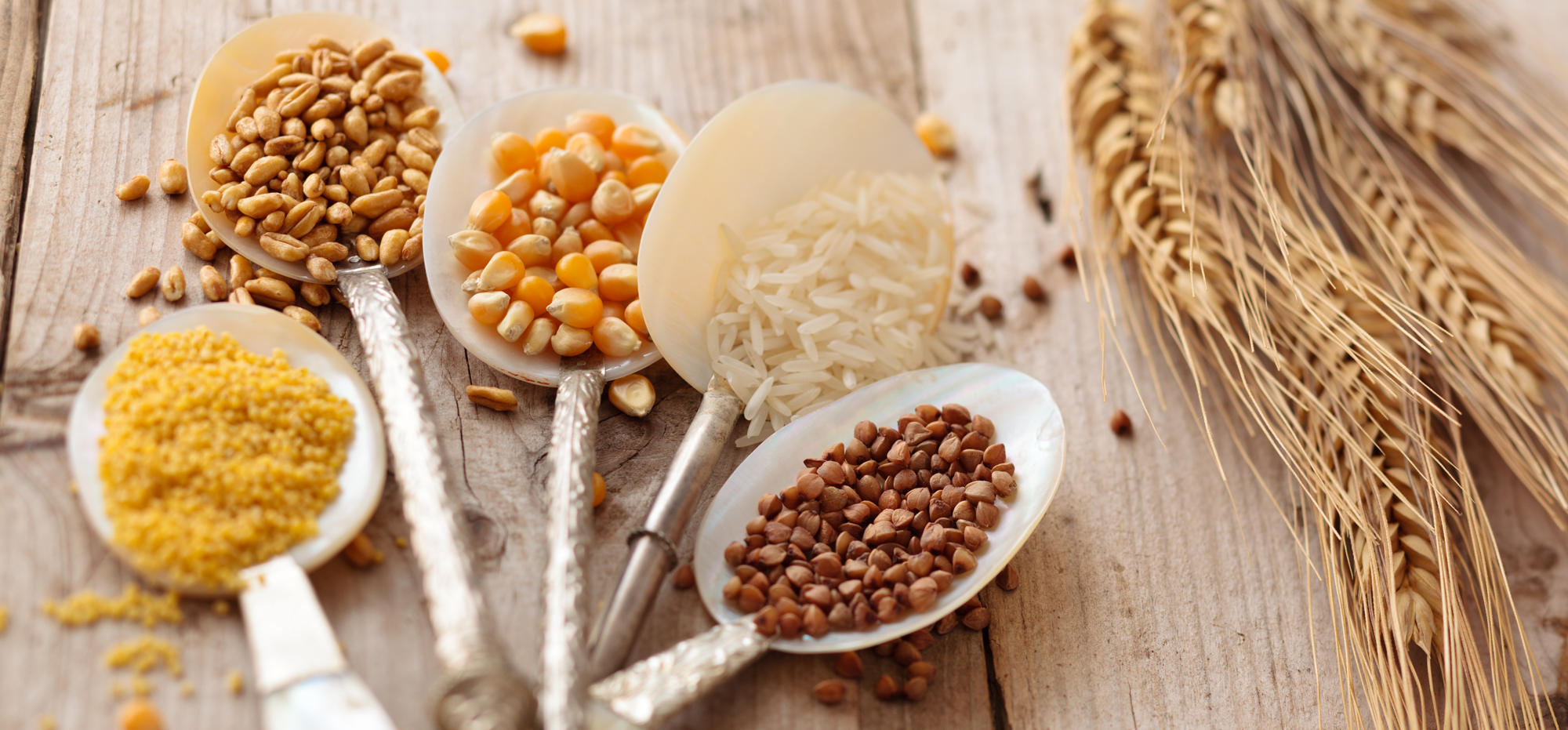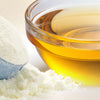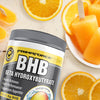Digestion-Resistant Maltodextrin: The Facts

 Digestion-resistant maltodextrin (DRM) is an ingredient you’ve probably seen in diet supplements. What exactly is it? And how does it differ from regular maltodextrin? In this white paper, we’ll explain what each type of maltodextrin is, what they’re used for, and the risks and benefits of each. You may be surprised to learn about the many benefits of digestion-resistant maltodextrin.
Digestion-resistant maltodextrin (DRM) is an ingredient you’ve probably seen in diet supplements. What exactly is it? And how does it differ from regular maltodextrin? In this white paper, we’ll explain what each type of maltodextrin is, what they’re used for, and the risks and benefits of each. You may be surprised to learn about the many benefits of digestion-resistant maltodextrin.
What are Maltodextrin and Digestion-Resistant Maltodextrin?
Maltodextrin and digestion-resistant maltodextrin (DRM) are types of dietary fiber. Fiber is a term used to describe a carbohydrate derived from plant products, giving our stool bulk and regularity. There are two types of dietary fiber: soluble and insoluble. While soluble fiber is dissolvable and digestible (i.e. can be broken down by bacteria in the large intestine, providing energy), insoluble fiber is non-digestible and exits the gastrointestinal system largely intact (Food and Drug Administration, 2017). The FDA recommends that adults consume 25g of dietary fiber per day (Food and Drug Administration, 2017); however, this value is rarely met in populations consuming a Western diet.
What is Maltodextrin?
Maltodextrin is a digestible, artificial sugar derived most commonly from corn, rice, or wheat, and is used in seasonings and sweets, acting as a binding agent while providing a slightly sweet taste (Williams, 2016). This polysaccharide, or simple carbohydrate, contains calories, and is broken down by the intestine to produce glucose, which can be utilized as an energy source to fuel our bodies (Adams, 2017).
Maltodextrin is commonly used in supplements, such as mass gainers, which contain a high carbohydrate content used to increase energy and add mass to athletes, such as body builders (Adams, 2017). It is also used in the gel packets consumed by athletes during endurance events, such as marathons and Ironman Triathlons (Williams, 2016). Additionally, maltodextrin has been shown to help promote muscle recovery and reduce muscle breakdown after strenuous exercise because of its high glycemic index (Williams, 2016).
What is Digestion-Resistant Maltodextrin?
Digestion-resistant maltodextrin is also most commonly derived from corn and wheat (as well as rice and potatoes). DRM is created by putting maltodextrin through an additional process that changes the bonds which connect the sugar units. It is indigestible because our bodies do not have the enzymes necessary to break down the new bonds. Contrary to maltodextrin, DRM does not contain calories, so does not affect blood sugar levels. However, it still offers many of the benefits of soluble/digestible fiber (Adams, 2017).
Maltodextrin vs. Digestion-Resistant Maltodextrin
Maltodextrin has a high glycemic index, causing a rapid spike in blood sugar. Interestingly, this polysaccharide has been shown to raise blood sugar levels more rapidly than glucose (Williams, 2016). Research has also shown that maltodextrin promotes increased growth of unhealthy bacteria in the gut flora resulting in increased inflammatory properties, which is likely related to the sugar content. Side effects of maltodextrin include weight gain, bloating, and gas (Adams, 2017). If you are not a body builder who is seeking to put on mass, or not an endurance athlete in need of a quick source of energy, it might be wise to limit your intake of maltodextrin. Similarly, if you have a chronic illness, such as diabetes, where maintaining stable blood sugar levels is important, maltodextrin may be an additive you should limit or avoid.
DRM ferments at a slower rate than maltodextrin, which helps minimize many of the negative side effects (e.g. bloating and flatulence) that are experienced with the soluble fiber. Unlike maltodextrin, DRM can be used as a prebiotic, promoting the growth of good bacteria in the intestine. In a cohort of 66 research participants, DRM was found to improve colonic transit time while also keeping their gastrointestinal system “regular” by adding bulk to their stools, maintaining balance in their consistency and frequency (Abellan Ruiz et al., 2016; Adams, 2017; Fibersol, 2017). DRM may be better at regulating blood sugar levels during and after meals by not causing as steep of a blood sugar spike when compared to regular maltodextrin (Fibersol, 2017). More importantly, DRM does not alter insulin levels (Fibersol, 2017), so may be a better alternative than regular maltodextrin for individuals living with diabetes.
While DRM contains little to no calories, research has shown people who consume DRM feel fuller and more satiated for longer periods of time after eating (Fibersol, 2017). For example, one study found that participants who consumed a meal with 10g of Fibersol-2, a product that is classified as a DRM, felt more satiated for 1½ to 2 hours following their meal (Ye et al., 2015). Another study found that Fibersol-2 reduced colorectal cancer incidence in vivo and in vitro through apoptosis (programmed cell death), preventing tumor growth (So et al., 2015). Phase II trials investigating this hypothesis are currently underway.

Conclusion
Whether you choose to use maltodextrin or DRM will depend on your personal needs and goals. If you are looking to increase body mass, utilize extra energy during workouts, or speed up muscle recovery, maltodextrin may be your product of choice. If your goal is to keep your GI systems regular, minimize calorie consumption (lose weight), keep blood glucose and insulin levels stable, or feel “full” for longer periods of time, DRM may be your product of choice.
References
Abellan Ruiz, M. S., Barnuevo Espinosa, M. D., Contreras Fernandez, C. J., Luque Rubia, A. J., Sanchez Ayllon, F., Aldeguer Garcia, M., . . . Lopez Roman, F. J. (2016). Digestion-resistant maltodextrin effects on colonic transit time and stool weight: a randomized controlled clinical study. European Journal of Nutrition, 55(8), 2389-2397. doi: 10.1007/s00394-015-1045-4
Adams, A. (October 3, 2017). The Health Risks of Maltodextrin. Retrieved December 7, 2017, from http://www.livestrong.com/article/502241-the-risks-of-maltodextrin/
Fibersol. (2017). What Is Fibersol®-2? Retrieved December 6, 2017, from http://www.fibersol.com/products/fibersol-2/
Food and Drug Administration. (2017). Dietary Fiber. Retrieved December 8, 2017, from http://www.accessdata.fda.gov/scripts/InteractiveNutritionFactsLabel/factsheets/Dietary_Fiber.pdf
So, E. Y., Ouchi, M., Cuesta-Sancho, S., Olson, S. L., Reif, D., Shimomura, K., & Ouchi, T. (2015). Tumor suppression by resistant maltodextrin, Fibersol-2. Cancer Biology & Therapy, 16(3), 460-465. doi: 10.1080/15384047.2015.1009269
Williams, L. (2016). Maltodextrin: The Time and Place for High Glycemic Carbohydrates. Retrieved December 8, 2017, from http://www.onnit.com/academy/maltodextrin-time-place-high-glycemic-carbohydrates/
Ye, Z., Arumugam, V., Haugabrooks, E., Williamson, P., & Hendrich, S. (2015). Soluble dietary fiber (Fibersol-2) decreased hunger and increased satiety hormones in humans when ingested with a meal. Nutr Res, 35(5), 393-400. doi: 10.1016/j.nutres.2015.03.004




